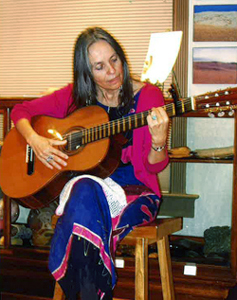AZTLAN
|
|
|
POPULATION: 54,500,000 (2014; in Aztlán and across the United States).
REGION (roughly and unofficially within territory of the United States: the states conquered by the United States in the War with Mexico (1846-1848) including California, Nevada, Utah, Arizona, New Mexico, and Colorado)
CAPITAL (Unofficial): Los Angeles
4,900,000 (Latin population of total L.A. population; 48% of total L.A.
metropolitan area; 2014)
HISTORY:
1100 (ca.) Aztecs
(aka. Mexicas) leave Aztlán
on century-long treck to Tenochtitlán;
the date indicates "long ago in the time of myth and legend".
1325 Aztecs
/ Mexicas arrive at prophesied island in lake with
eagle biting a serpent and sitting on a cactus: Tenochtitlán.
1521
Aztecs
conquered by Hernán Cortés.
1540-1541 Francisco Vázquez
de Coronado y Luján (AKA Coronado; 1510-1554),
a Spanish conquistador, explored the western regions (from the Colorado River
west through New Mexico and Kansas) in 1540-1542; ostensibly, he was searching
for the so-called Seven Cities of Gold, or the mythical Seven Cities of Cíbola. For an excellent account
of the archeology and anthropology of this region, with a discussion of topics
such as “Hispanic Colorado,” “Inhabiting the Lower
Purgatory” [river], “Plazas and Community,” etc., see the
book by Bonnie Clark, On the Edge of
Purgatory; An Archeology of Place in Hispanich
Colorado, University of Nebraska Press, 2011. (See 1969 below).
1607
Santa
Fe, Nuevo México founded by Spanish explorers, missionaries, and
conquistadors.
1769
San
Diego, California, founded by Gaspar de Portolá
and Junípero Serra: series of Franciscan
missions extended throughout Alta California.
1821
Aztlán made into states in independent nation of
México.
1836
Texas
independent from México, forms Lone Star Republic, and then joins as a
state of U.S.A.
1846-1848 Mexican-American
War.
1848
Treaty
of Guadalupe Hidalgo by which Aztlán
(California, Nevada, Arizona, Nuevo México, Colorado, Utah) is
incorporated into U.S.A.
1927-1993 César
Chávez (born Yuma, Arizona).
1929 League
of United Latin American Citizens (LULAC) founded by Benjamín
Garza.
1952
McCarran-Walter
Act: immigrants over 50 years old allowed to qualify
for citizenship in Spanish.
César
Chávez: organizer for Community Service Organization in
1962 César
Chávez founds United Farm Workers Union in
1965 UFW
leads table grape boycott.
1968 César
Chávez fasts for 25 days to reaffirm principles of non-violence.
1969
Crusade
for Justice Youth Conference, Denver, Colorado adopts The Spiritual Plan of Aztlán (written
by Alurista): see 1540 above.
1988 Chávez
fasts for 36 days protesting pesticide poisoning of grape workers and their
children.
1991 Chávez
received Águila Azteca award
(México’s national prize for achievement for Mexicans outside
México).
1994 Chávez
posthumously received Presidential Medal of Freedom in
1998
2005 Antonio
Villaraigosa (born Antonio Ramón Villar, 1953 - present) elected mayor of Los Angeles;
reelected 2009; chair of the Democratic Party National Convention, 2012.
GOVERNMENT:
ORGANIZATIONS:
Mexican
American Political Organization (MAPA)
Mexican
American Student Association (MASA)
Movimiento Estudiantil Chicano de Aztlán (MECHA)
SOCIAL AND POLITICAL LEADERS:
César
Chávez (1927-1993), leader of farm workers
Rodolfo (Corky) González (b. 1927)
Reies López Tijerino (b.
1925)
Enrique
Cisneros, mayor, San Antonio
Eduardo
Roybal, Congressman from Los Angeles
Antonio Villaraigosa (, 1953 - present) elected mayor of Los
Angeles; reelected 2009; chair of the Democratic Party National Convention
2012.
MAJOR MEMBERS OF INTELLIGENTSIA:
POETRY:
Alurista
(1948-present): floricanto en aztlán
Gloria
Anzaldúa, Borderlands/La Frontera: The New Mestiza (1987)
Corky González, "I am Joaquín/ Yo soy
Joaquín"
Luis Alberto Urrea
(1955), “hymn to vatos who will never be in a
poem,” in Vatos,
2000.
Gloria
Velásquez, professor, California Polytechnic
State University; author of I Used to Be
a Superworman (1994), Xicana on the Run (2005). Note: Ms. Velázquez is playing a guitar
given to her by WTL; she calls the guitar "Guillermo."
|
|
NOVEL:
Rodolfo
Anaya, Bless Me Ultima,
Heart of Aztlán;
Cuentos/Tales of the Hispanic Southwest
Raymond
Barrio, Plum Plum
Pickers
Richard
Vásquez, Chicano
José Antonio Villarreal, Pocho
Luis
Alberto Urrea (1955), La hija de la Chuparrosa (2005), Queen of America (2011).
ESSAY/PHILOSOPHY/LITERARY
CRITICISM:
Luis
Leal, Aztlán y México
(1985)
Genaro
Padilla, The Stories of Fray
Angélico Chávez (1987)
Armando
Rendón, Chicano Manifesto (1971)
Gloria E. Anzaldúa:
Borderlands/La Frontera:
The New Mestiza (1987)
YOUTH
FICTION:
Gloria
Velásquez, professor, California Polytechnic
State University, the Roosevelt High series of youth fiction (1994-2009).
PAINTING:
José
Montoya
MUSIC:
Los
Lobos
Selena
CINEMA:
Luis
Valdés, La bamba (1987)
Cheech Marín,
Born in
THEATER:
Luis
Valdés, El teatro campesino
CUISINE:
Víctor Valle and Rudy Torres, Latino Metropolis (2000)
Gustavo
Arellano, “How Mexican Food Became More American than Apple Pie,” Reason.com: Free Minds, Free Markets
(June online issue, 2012; http://reason.com/archives/2012/05/14/taco-usa).
In this excellent article, Arellano says this: “That you have a nation
(and increasingly a planet—you can find Mexican restaurants from Ulan
Bator to Sydney to Prague) lusting after tequila, guacamole, and tres leches
cake isn’t an exercise in culinary neocolonialism but something closer to
the opposite. By allowing itself to be endlessly adaptable to local tastes,
Mexican food has become a primary vehicle for exporting the culture of a
long-ridiculed country to the far corners of the globe. Forget Mexico’s
imaginary Reconquista of the American
Southwest; the real conquest of North
America is a peaceful and consensual affair, taking place one tortilla at a
time.” See the linked .pdf textbook document: => Mexican Food.


